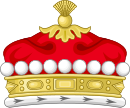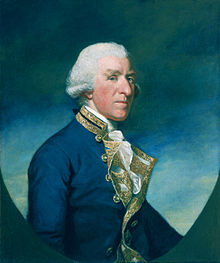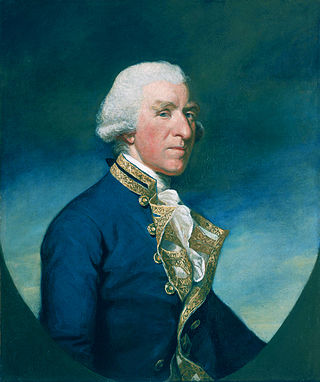
Samuel Hood, 1st Viscount Hood was an admiral in the Royal Navy. As a junior officer he saw action during the War of the Austrian Succession. While in temporary command of Antelope, he drove a French ship ashore in Audierne Bay, and captured two privateers in 1757 during the Seven Years' War. He held senior command as Commander-in-Chief, North American Station and then as Commander-in-Chief, Leeward Islands Station, leading the British fleet to victory at Battle of the Mona Passage in April 1782 during the American Revolutionary War. He went on to be Commander-in-Chief, Portsmouth, then First Naval Lord and, after briefly returning to the Portsmouth command, became Commander-in-Chief, Mediterranean Fleet during the French Revolutionary Wars. His younger brother was Admiral Alexander Hood, 1st Viscount Bridport (1726–1814), and his first cousin once-removed was Admiral Sir Samuel Hood, 1st Baronet (1762–1814).

Baron Lyttelton is a title that has been created once in Peerage of England and twice in Peerage of Great Britain, both times for members of the Lyttelton family. Since 1889 the title has been a subsidiary title of the viscountcy of Cobham.

Viscount Cobham is a title in the Peerage of Great Britain that was created in 1718. Owing to its special remainder, the title has passed through several families. Since 1889, it has been held by members of the Lyttelton family.

Marquess Townshend is a title in the Peerage of Great Britain held by the Townshend family of Raynham Hall in Norfolk. The title was created in 1787 for George Townshend, 4th Viscount Townshend.

Marquess of Linlithgow, in the County of Linlithgow or West Lothian, is a title in the Peerage of the United Kingdom. It was created on 23 October 1902 for John Hope, 7th Earl of Hopetoun. The current holder of the title is Adrian Hope.
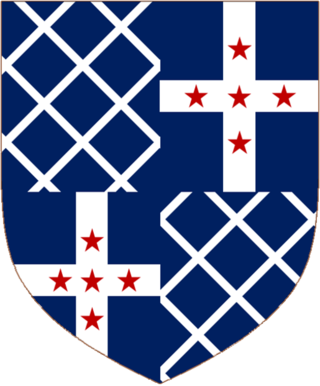
Baron Braye, of Eaton Bray in the County of Bedford, is a title in the Peerage of England. It was created in 1529 for Edmund Braye, 1st Baron Braye. However, the family originally originate from Normandy, they are direct descendants of Chevalier Baudry de Bray who came over to England in the Battle of Hastings of 1066. The family's local area in Leicestershire played host to two battles in England of note, the Battle of Bosworth Field where the current family's ancestor's were on opposing sides, and also Battle of Naseby during the First English Civil War, where the old manor house hosted King Charles I. The barony was created by writ, which means that it can descend through both male and female lines. He was succeeded by his son, the second Baron. He died from wounds received at the Battle of St Quentin in 1557. Lord Braye was childless and on his death the title fell into abeyance between his sisters.

Earl Howe is a title that has been created twice in British history, for members of the Howe and Curzon-Howe family respectively. The first creation, in the Peerage of Great Britain, was in 1788 for Richard Howe, 4th Viscount Howe, but it became extinct upon his death in 1799. The second creation, in the Peerage of the United Kingdom, was in 1821 for Richard Curzon-Howe, 2nd Viscount Curzon, and it remains extant.

Viscount Massereene is a title in the Peerage of Ireland. It was created in 1660, along with the subsidiary title of Baron Loughneagh. From 1665 to 1816 the Skeffington Baronetcy of Fisherwick was attached to the viscountcy and from 1756 to 1816 the Viscounts also held the title of Earl of Massereene. Since 1843 the peerages are united with titles of Viscount Ferrard, of Oriel and Baron Oriel, both in the Peerage of Ireland, and Baron Oriel, in the Peerage of the United Kingdom. The Viscount also holds the subsidiary titles of Baron Loughneagh (1660) and Baron Oriel (1790) in the Peerage of Ireland and Baron Oriel (1821) in the Peerage of the United Kingdom. As Baron Oriel, he sat in the House of Lords until 1999.

Viscount Bridport is a title that has been created twice, once in the Peerage of Great Britain and once in the Peerage of the United Kingdom. The first creation became extinct in 1814, while the second creation is still extant.

Marquess of Hastings was a title in the Peerage of the United Kingdom. It was created on 6 December 1816 for Francis Rawdon-Hastings, 2nd Earl of Moira.
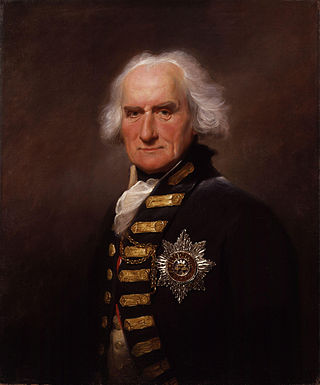
Admiral Alexander Hood, 1st Viscount Bridport, KB, of Cricket St Thomas, Somerset, was an officer of the British Royal Navy during the French Revolutionary Wars and Napoleonic Wars.

Samuel Hood, 2nd Baron Bridport, of Redlynch House in Wiltshire, of Cricket House at Cricket St Thomas in Somerset, and of 12 Wimpole Street in Westminster, was a British politician and peer.
There have been three baronetcies created for people with the surname Hood, one in the Baronetage of Great Britain and two in the Baronetage of the United Kingdom. The first Baronet of the first creation was made Viscount Hood, while the fourth Baronet of the second creation was made Baron St Audries.
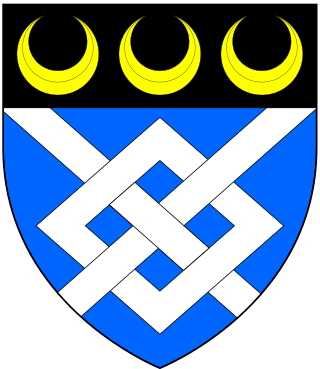
Alexander Fuller-Acland-Hood, 1st Baron St Audries PC, known as Sir Alexander Fuller-Acland-Hood, Bt, until 1911, was a British Conservative Party politician. He served as Parliamentary Secretary to the Treasury under Arthur Balfour from 1902 to 1905.

Charlotte Mary Hood, Baroness Bridport, 3rd Duchess of Bronte was the daughter of William Nelson, 1st Earl Nelson and Sarah Yonge. As the niece and heiress of Admiral Horatio Nelson, 1st Viscount Nelson, she succeeded to the title of Duchess of Bronte in 1835.

Rowland Arthur Herbert Nelson Hood, 3rd Viscount Bridport, 6th Duke of Bronte, of Castello di Maniace, near Bronte, Sicily, was a British naval commander and Conservative politician.

General Alexander Nelson Hood, 1st Viscount Bridport, 4th Duke of Bronte, was a British Army officer and courtier.
Hercules Langford Rowley PC was an Irish politician and landowner.
Henry Hood, 2nd Viscount Hood, was an English peer and courtier. He is known for his relationship with Caroline of Brunswick.

The Hood baronetcy, of Tidlake in the County of Surrey, was created in the Baronetage of the United Kingdom on 13 April 1809 for Admiral Samuel Hood (1762–1814). He was a younger son of Samuel Hood (1715–1805) of Kingsland in the parish of Netherbury, Dorset, a purser in the Royal Navy and first cousin of the 1st Viscount Hood and the 1st Viscount Bridport. The baronetcy was created with remainder to his nephew Alexander Hood (1793–1851) of Wootton House, Butleigh, Somerset, and the heirs male of his body.
